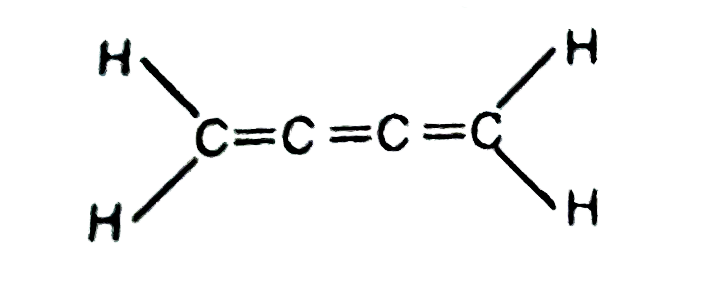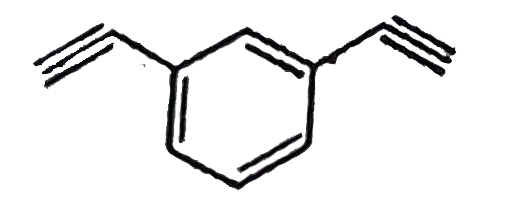Two pi and half sigma bonds are present in :
NO
CN
CO
N2
The correct Answer is:B
To determine which compound has 2 pi and half a sigma bond, we will analyze the molecular structure and bonding of each option provided in the question. We will focus on the number of electrons and the types of bonds formed in each molecule.
1. Identify the Electron Count for Each Compound:
- For the first compound, NO (Nitric Oxide), it has a total of 15 electrons.
- For the second compound, Cyanide (CN⁻), it has a total of 13 electrons.
- For the third compound, CO (Carbon Monoxide), it has a total of 14 electrons.
- For the fourth compound, N₂ (Nitrogen gas), it also has a total of 14 electrons.
2. Construct the Molecular Orbital Diagram for Each Compound:
- For NO:
- The molecular orbital configuration is:
- σ(1s)², σ*(1s)², σ(2s)², σ*(2s)², π(2p_x)², π(2p_y)², σ(2p_z)¹
- This results in 1 sigma bond and 1 half pi bond (due to the unpaired electron in σ(2p_z)).
- For Cyanide (CN⁻):
- The molecular orbital configuration is:
- σ(1s)², σ*(1s)², σ(2s)², σ*(2s)², π(2p_x)², π(2p_y)², σ(2p_z)¹
- This results in 2 pi bonds (from π(2p_x) and π(2p_y)) and 1 half sigma bond (from σ(2p_z)).
- For CO:
- The molecular orbital configuration is:
- σ(1s)², σ*(1s)², σ(2s)², σ*(2s)², π(2p_x)², π(2p_y)², σ(2p_z)²
- This results in 2 pi bonds and 1 sigma bond.
- For N₂:
- The molecular orbital configuration is:
- σ(1s)², σ*(1s)², σ(2s)², σ*(2s)², π(2p_x)², π(2p_y)²
- This results in 2 pi bonds and 1 sigma bond.
3. Count the Bonds:
- NO: 1 sigma + 0.5 pi = 1.5 bonds (not our answer).
- Cyanide (CN⁻): 2 pi + 0.5 sigma = 2.5 bonds (this is our answer).
- CO: 2 pi + 1 sigma = 3 bonds (not our answer).
- N₂: 2 pi + 1 sigma = 3 bonds (not our answer).
4. Conclusion:
- The only compound that has 2 pi bonds and half a sigma bond is Cyanide (CN⁻).
Final Answer:
The compound with 2 pi and half a sigma bond is Cyanide (CN⁻).
- For the first compound, NO (Nitric Oxide), it has a total of 15 electrons.
- For the second compound, Cyanide (CN⁻), it has a total of 13 electrons.
- For the third compound, CO (Carbon Monoxide), it has a total of 14 electrons.
- For the fourth compound, N₂ (Nitrogen gas), it also has a total of 14 electrons.
- For NO:
- The molecular orbital configuration is:
- σ(1s)², σ*(1s)², σ(2s)², σ*(2s)², π(2p_x)², π(2p_y)², σ(2p_z)¹
- This results in 1 sigma bond and 1 half pi bond (due to the unpaired electron in σ(2p_z)).
- For Cyanide (CN⁻):
- The molecular orbital configuration is:
- σ(1s)², σ*(1s)², σ(2s)², σ*(2s)², π(2p_x)², π(2p_y)², σ(2p_z)¹
- This results in 2 pi bonds (from π(2p_x) and π(2p_y)) and 1 half sigma bond (from σ(2p_z)).
- For CO:
- The molecular orbital configuration is:
- σ(1s)², σ*(1s)², σ(2s)², σ*(2s)², π(2p_x)², π(2p_y)², σ(2p_z)²
- This results in 2 pi bonds and 1 sigma bond.
- For N₂:
- The molecular orbital configuration is:
- σ(1s)², σ*(1s)², σ(2s)², σ*(2s)², π(2p_x)², π(2p_y)²
- This results in 2 pi bonds and 1 sigma bond.
- NO: 1 sigma + 0.5 pi = 1.5 bonds (not our answer).
- Cyanide (CN⁻): 2 pi + 0.5 sigma = 2.5 bonds (this is our answer).
- CO: 2 pi + 1 sigma = 3 bonds (not our answer).
- N₂: 2 pi + 1 sigma = 3 bonds (not our answer).
- The only compound that has 2 pi bonds and half a sigma bond is Cyanide (CN⁻).
The compound with 2 pi and half a sigma bond is Cyanide (CN⁻).
Topper's Solved these Questions
Similar Questions
How many no. of σ-bonds are present in H2SO4 ?
View SolutionHow many C-C σ bonds are present in the given structure ?

View SolutionHow many sigma and pi bonds are present in the molecules of toluene and naphthalene ?
View SolutionHow many sigma and pi bonds are present in a benzene molecule?
View SolutionHow many σ and π bonds are present in a benzene molecule ? .
View SolutionHow many σ and π bonds are present in the molecule of ethene ?
View SolutionHow many C-C sigma (σ) bonds are present in the given compound ?

View SolutionHow many sigma and pi bonds are present in
(a) CH3−C≡N
(b) CH2=C=O
View SolutionHow many sigma and pi bonds are present in
(a) CH3−C≡N
(b) CH2=C=O
View Solutiondπ−pπ bond is present in :
View Solution
